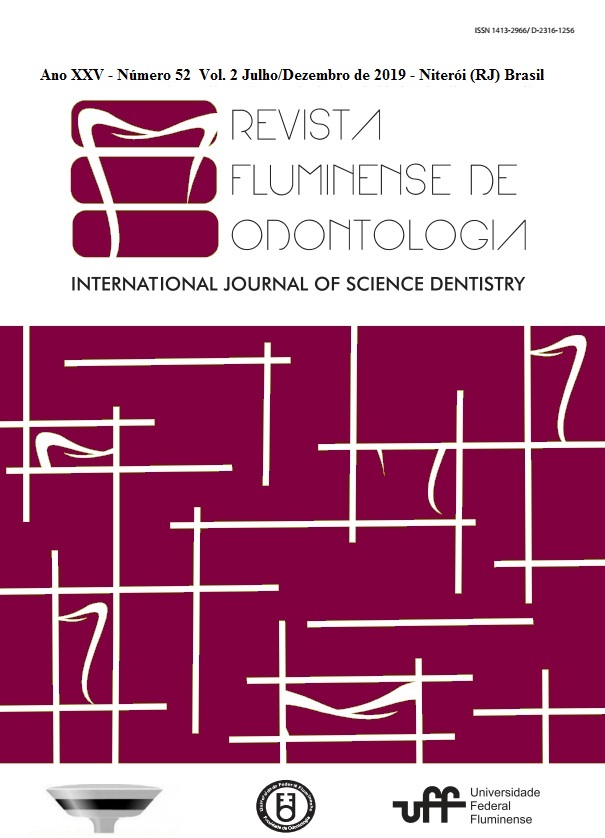FRATURA DE MANDÍBULA EDÊNTULA ATRÓFICA: RELATO DE CASO
DOI:
https://doi.org/10.22409/ijosd.v0i0.38506Resumen
RESUMO
A atrofia da mandíbula é mais comumente encontrada em pacientes idosos ou pacientes com perda dentária precoce, tornando tal osso mais suscetível a fraturas devido a diminuição da altura, da espessura óssea e de seu fluxo sanguíneo. O manejo de injúrias em mandíbulas nestas condições deve levar em consideração a idade e a condição sistêmica do paciente, o tempo decorrido desde o trauma e a complexidade do dano. O tratamento visa a redução e imobilização das fraturas a fim de restabelecer forma e função, incluindo técnicas abertas (cirúrgicas) e fechadas (não-cirúrgicas). Em fraturas de mandíbula atróficas, o tratamento não-cirúrgico não costuma ser uma opção viável em virtude da ausência de elementos dentários e pequena área de contato ósseo existente na região da fratura. Sendo assim, a redução aberta com fixação interna rígida tem sido o tratamento padrão associadas a sistemas de perfil pesado como as placas de reconstrução. O presente trabalho tem como objetivo relatar o caso clínico de uma paciente de 87 anos de idade, sexo feminino, leucoderma, atendida no Hospital Federal dos Servidores do Estado, apresentando fratura bilateral em corpo de mandíbula atrófica. Para o tratamento, foi realizada redução e fixação interna rígida com placas e parafusos. A paciente seguiu em controle pós-operatório durante seis meses sem a presença de complicações.
Palavras-chave: Fratura mandibular; Mandíbula atrófica; Fixação interna rígida.
ABSTRACT
Jaw atrophy is most commonly found in elderly patients or with early tooth loss, making such bone more susceptible to fractures due to decreased height, bone thickness and blood flow. The management of injuries in jaws in these conditions should take into account the age and the systemic condition of the patient, the time elapsed since the trauma and the complexity of the damage. The treatment aims to reduce and immobilize fractures to restore shape and function, including open and closed techniques. In atrophic mandible fractures, non-surgical treatment is usually not a viable option, due to the absence of dental elements and small area of bone contact in the fractured region. Thus, open reduction with rigid internal fixation has been the standard treatment associated with heavy profile systems. The present study aims to report the clinical case of an 87 years old female patient, leucoderma, attended at Hospital Federal dos Servidores do Estado, presenting bilateral fracture in atrophic jaw body. For treatment, reduction and rigid internal fixation with plates and screws were performed. The patient was followed up for six months without postoperative complications.
Key words: Mandibular fracture; Atrophic jaw; Rigid internal fixation




